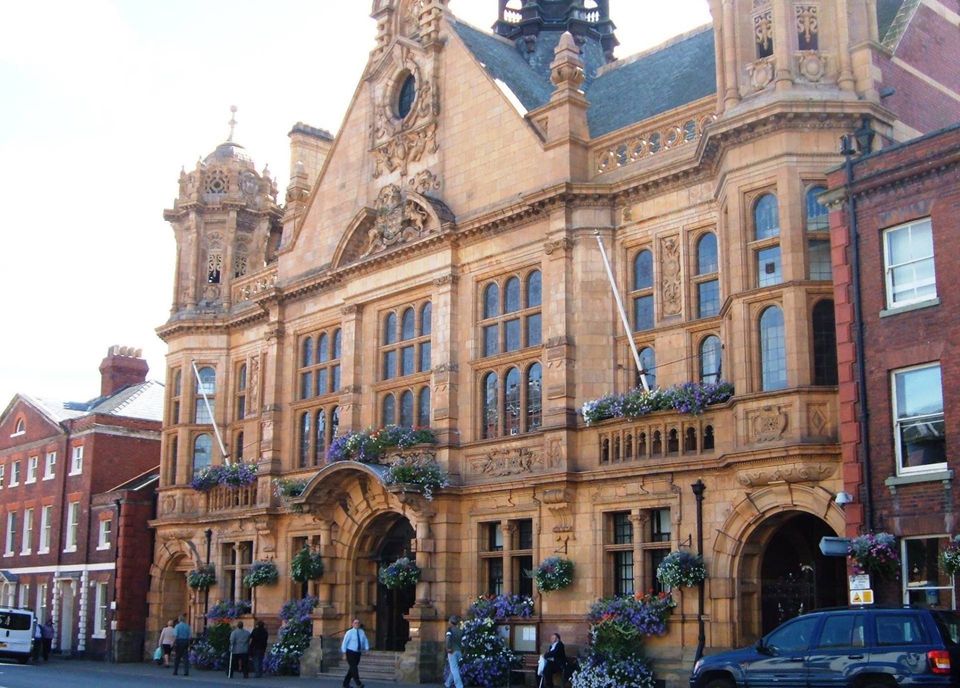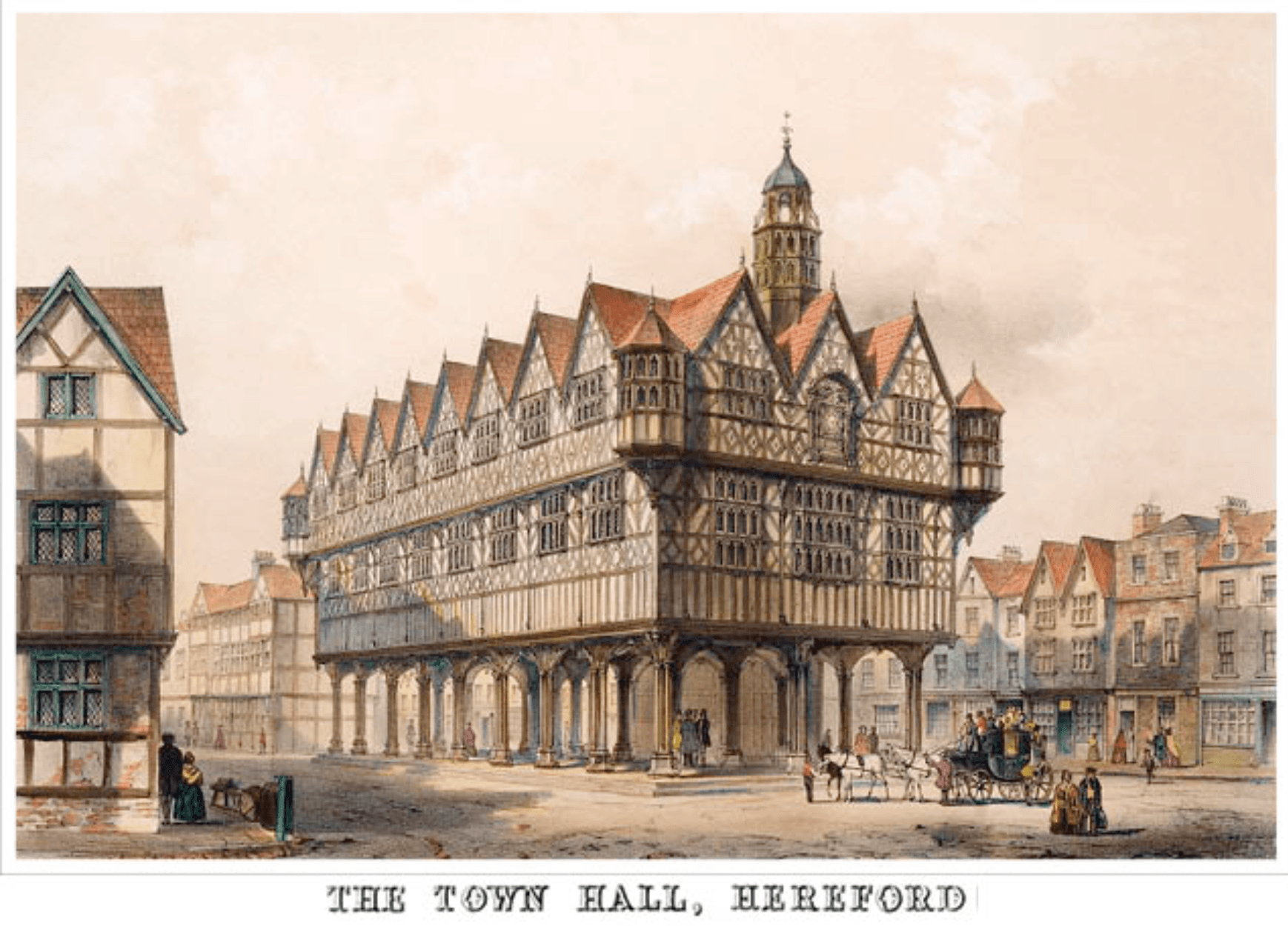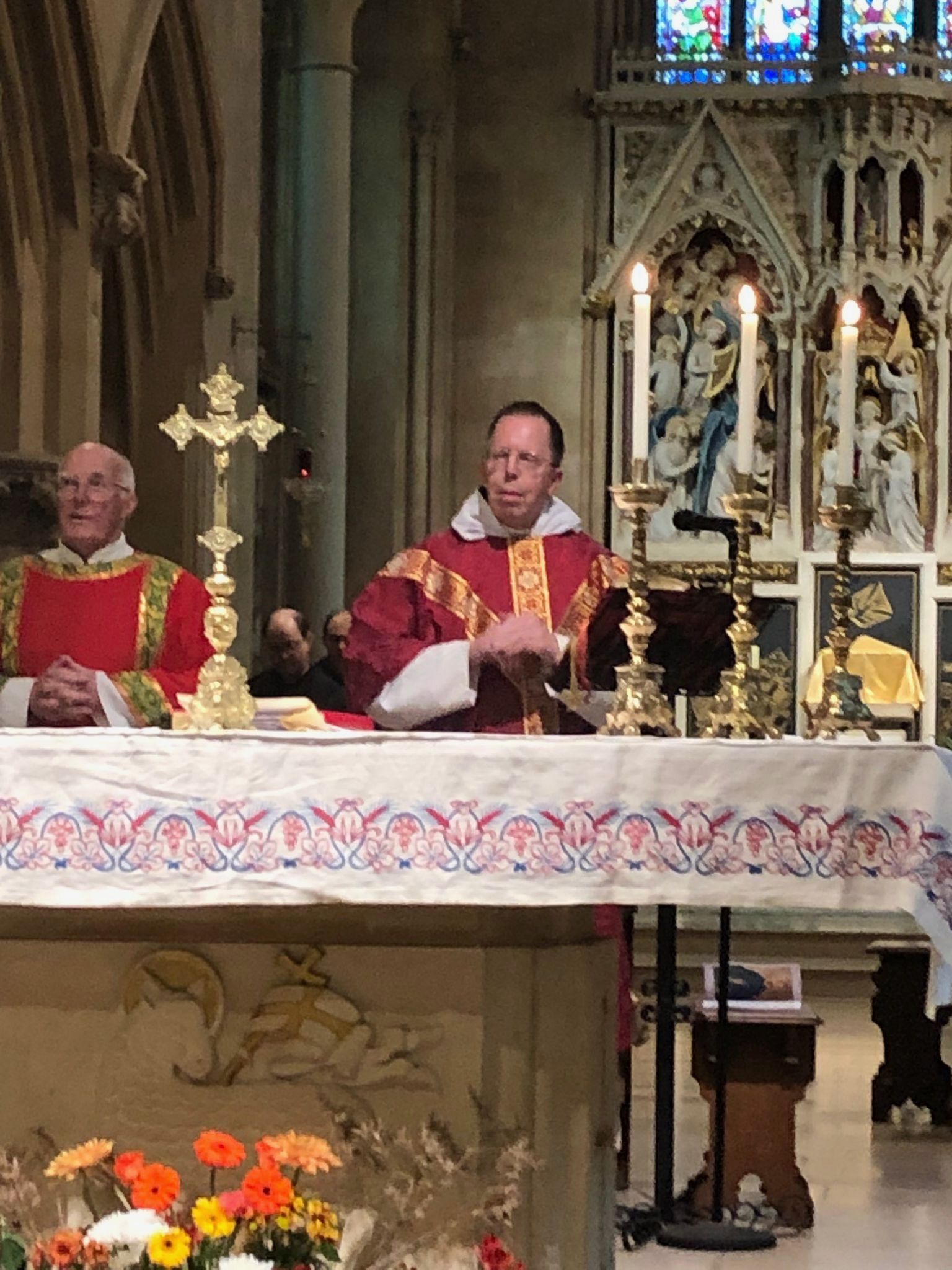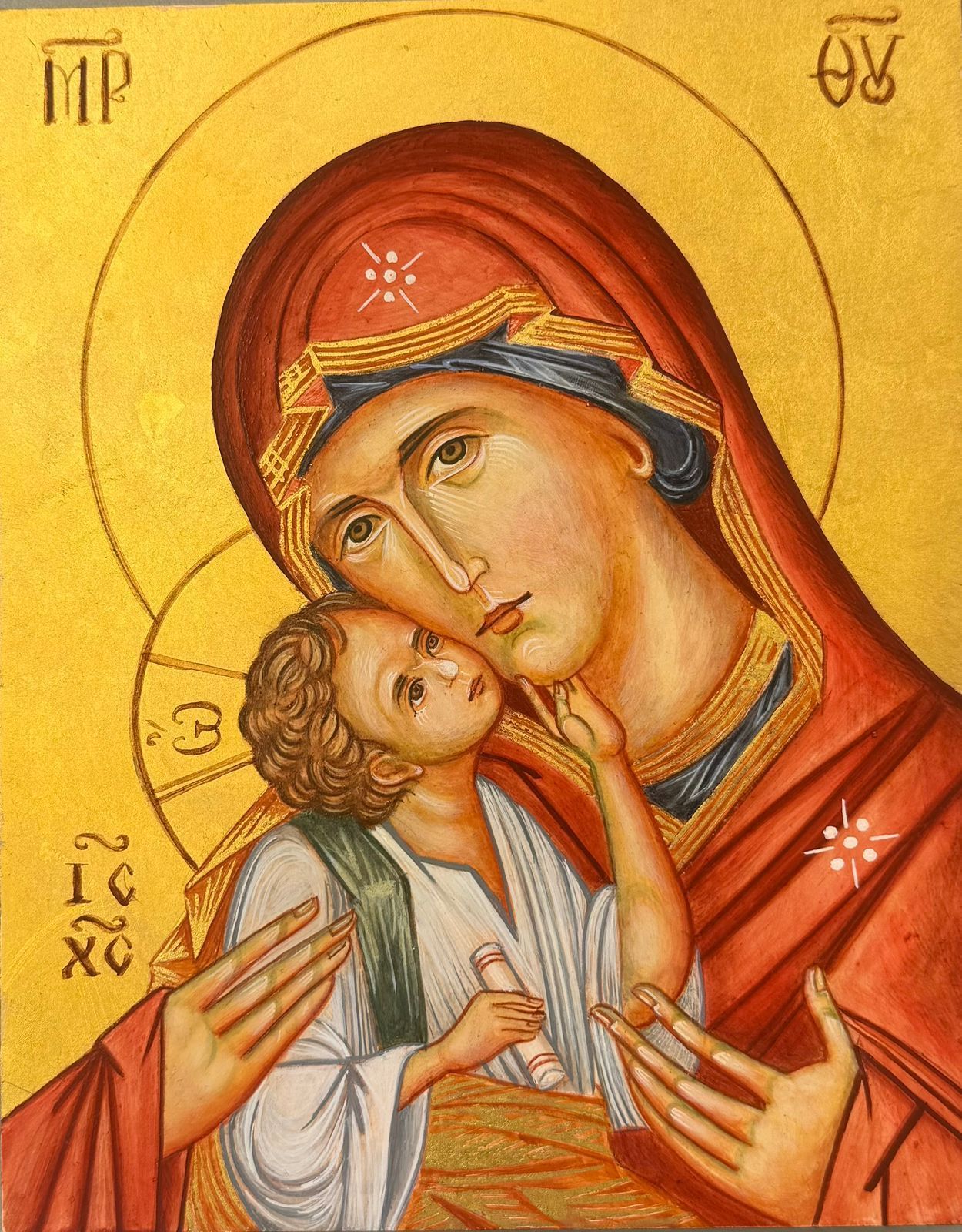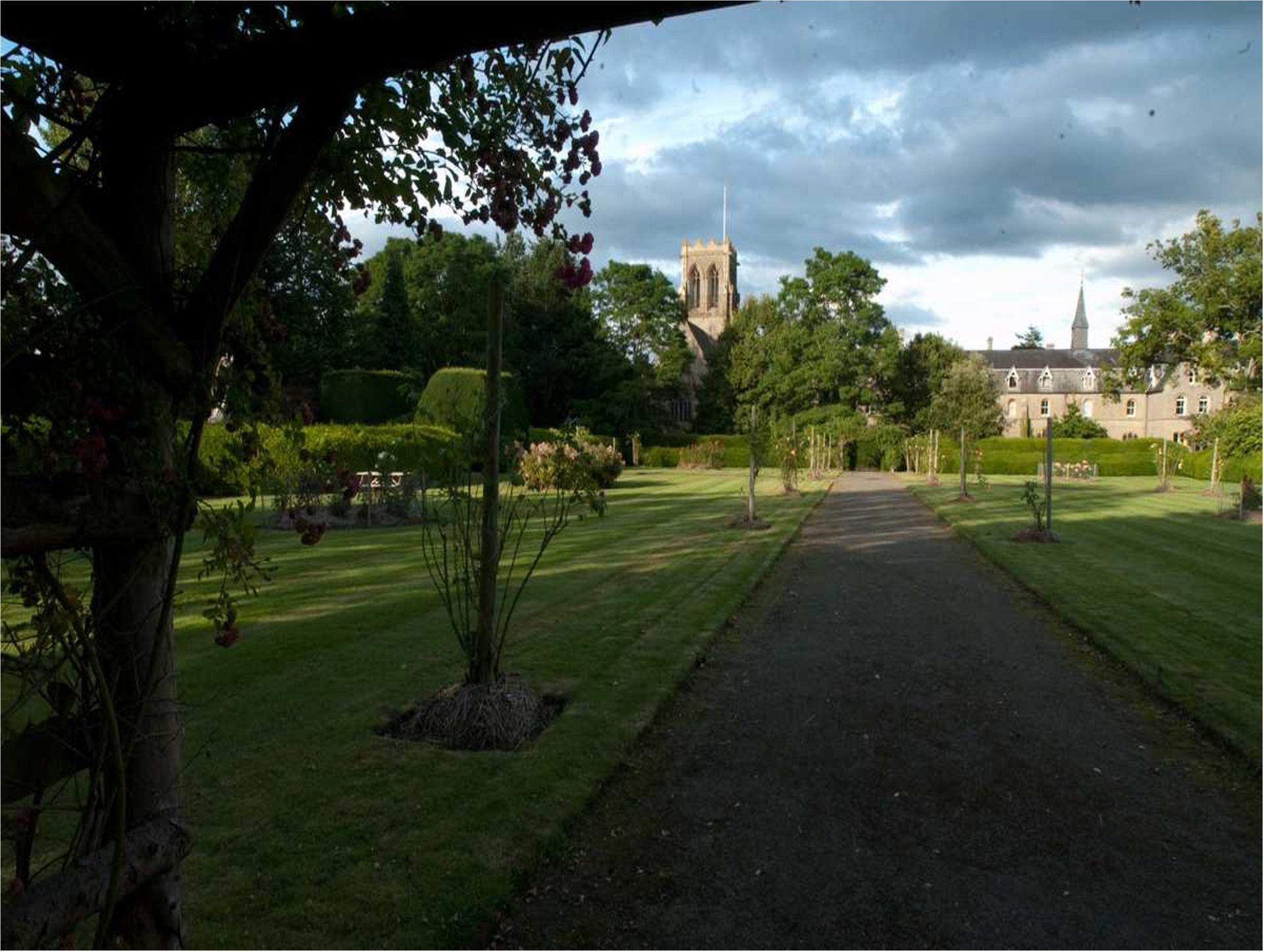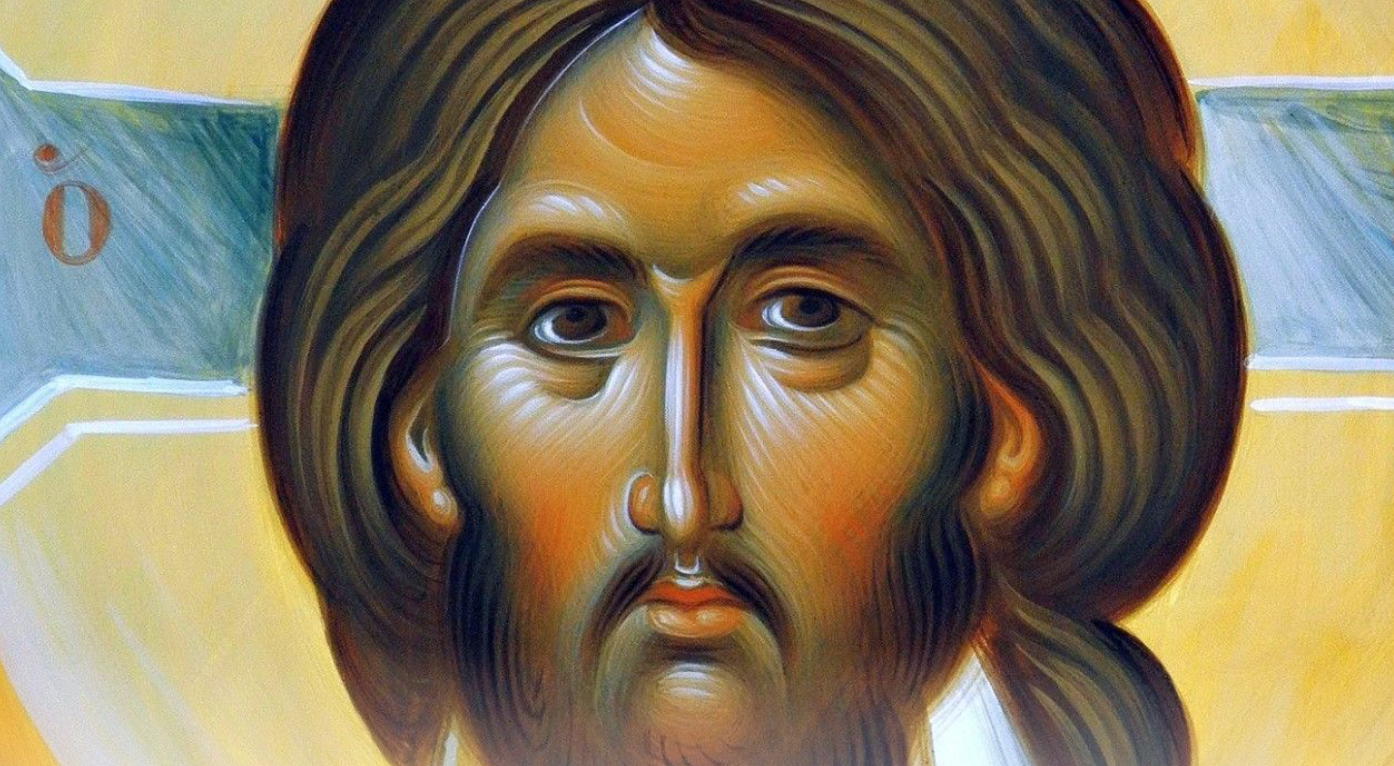Belmont at 100: Reception at the Town Hall
Some may be interested in how the City of Hereford welcomed the new Abbot Aelred Kindersley one hundred years ago. Here is an account of the civic reception given a few days after his election, as it was reported in The Tablet. The Town Hall was fairly new in those days, built in 1904. The proceeds of the event went to the electric light fund.
Thursday, July 1 will be long remembered in the parish of St. Francis Xavier’s, Hereford. It was, the occasion of a civic reception to the newly elected Abbot of Belmont, the Right Rev. G. Aelred Kindersley, O.S.B., held in the Town Hall. His Worship the Mayor A. D. Steel was accompanied by the Mayoress, to whom a beautiful bouquet of sweet peas was presented, on behalf of the congregation, by Miss Margaret Willis, of Berrington Street Convent.
The Abbot of Belmont, supported by the Mayor and Mayoress and the Rector of St. Francis Xavier’s, assembled in the Mayor’s parlour, and the whole congregation and visitors present were introduced to him one by one. The audience passed through into the main hall, where they were entertained to a concert provided by artists from St. Francis Xavier’s and Hereford Cathedral choirs. The singing of Miss Mary Musgrave, the leading soprano of the Catholic choir, was very much appreciated. To the city, and to the Catholics, she is well known, having given them the benefit of her talent on so many occasions in the cause of charity. At the conclusion of the concert, the Abbot of Belmont, with the Mayor and Mayoress, the Rector (Dom Placid Smith, O.S.B.), Mrs Warren Swettenham, Dom Gregory Buisseret and Dom Romuald Leonard, O.S.B. (parish priest of Belmont), proceeded to the stage, the appearance of the Mayor being greeted with hearty applause. Father Placid Smith then took the chair, and in a brief speech introduced the new Abbot, and read the illuminated address of welcome which the congregation and their friends desired to present to him. The address was framed in oak and inscribed on cream vellum. Inset at the top corners, in the decorative vine leaf border, were small paintings of St. Michael’s statue (Belmont) and the Abbey Tower, and below was a photograph of the altar of St. Francis Xavier’s. Mrs. Warren Swettenham handed the small gift to the Abbot on behalf of those present. The address was as follows :
“To the Right Reverend G. Aelred Kindersley, O.S.B, first Abbot of Belmont.
“ We, the congregation of St. Francis Xavier’s and our friends, amongst whom we are privileged to count his Worship the Mayor and the Mayoress of this city, rejoice with you upon the signal distinction conferred upon Belmont by the action of His Holiness the Pope in raising it to the dignity of an Abbey.
“We congratulate you upon your election as the first Abbot of Belmont, and we beg to associate ourselves with your Community in wishing you many years of prosperity and happiness in your new office. As a monastery of exact liturgical observance and a seat of learning, Belmont has for more than fifty years held a unique position in the archdiocese.
“We are confident that under your fatherly care and government, Belmont, as an Abbey, will continue to carry on the ancient traditions of the Benedictine Order, and that it will have an ever increasing influence for good, and prove itself worthy of the high dignity His Holiness the Pope has been pleased to confer upon it. ' '
“Associating ourselves once more with your community, may we assure you of our loyalty and respect, and the help, of our prayers in the great work that it has been given you to do.”
The Abbot suitably replied in a speech of thanks to the assembled guests, for having put on record in the beautiful address the expression of their loyalty and respect. He thanked them also for the hearty reception they had accorded him. Father Placid Smith, O.S.B., proposed a vote of thanks to his Worship the Mayor, and spoke of Mr. Steel’s great kindness in attending the reception and giving it its civic character, assuring him that the Catholics of Hereford deeply appreciated the honour he had done them. The motion being enthusiastically carried by the large audience, the Mayor, wearing his chain of office, rose amid applause to respond. He said that he felt that thanks were due not to, but from him, for the splendid reception he and the Mayoress had received. He esteemed it a privilege to be present at such a gathering. He alluded in feeling terms to his old and valued friend, the late Canon Dolman, O.S.B., and expressed his pleasure that Father Placid Smith, like his predecessors in the mission, be a member of the City Education Committee. He thanked all present for their hospitality- to the Mayoress and himself, and in the name of the city offered his congratulations to the new Abbot and to his community; on the honour that His Holiness the Pope had conferred upon Belmont, and wished him ad multos annos.
Refreshments were served in the vestibule and upper lobby, and the evening’s entertainment was brought to a close with an enjoyable dance. Under the able Stewardship of Mr. W. G. Godsell and his assistants, the function passed off with success, and was appreciated by all who attended it. The proceeds were devoted to the electric light fund.
It is worth recalling the Old Town Hall in Hereford which was still standing when Belmont was built, pulled down only in 1862 to ease traffic flow! The area is now the pedestrianised 'High Town'.
According to Nikolaus Pevsner (in his The Buildings of England: Herefordshire, p.180), the Old Town Hall was "a sight to thrill any visitor from England or abroad. It was the most fantastic black and white building imaginable, storied, with gables and the richest, most curious decoration."
The Market Hall was supported by twenty-seven timber columns arranged in three rows of nine. It was 84 feet long and 34 feet wide, and crowned by a lantern which was over 100 feet high. It has been said that it was the largest building of its kind in Britain.The first floor was used for magistrates' chambers and the assize court, while the second floor provided chambers for fourteen craft guilds: bakers; barbers; barber surgeons; braziers; butchers; clothiers; coopers; cordwainers; glovers; joiners; mercers; tanners; tylers; and weavers. The open space between the pillars was used for the market place.
The Market Hall was built at the end of the 16th century in the centre of High Town. The upper storey was removed in 1792 to ease the pressure on the timber pillars. At this time it was also covered in the plasterwork then considered fashionable. The Market Hall was part of a row of buildings called the Butchers' Row. The entire building was taken down in 1862, as were all the other buildings in Butchers' Row, with the exception of the Old House, to allow traffic to flow more easily and because they were considered a public nuisance in that cattle were still slaughtered there. You can find an information board in the centre of the now pedestrianised area across from the Butter Market. The paving stones are designed to show where the Market Hall would have originally stood. Now the Old House is the only remaining building of Butchers' Row.

